Spotted this amplifier atop of a big pile at the flea market. It was reflective due to being washed away by the falling rain – nobody took care in covering it.
I bought it partially for the big power transformer inside, since … shipping an similar one would cost more than what the seller was asking for the whole amplifier.
Table of Contents
- Exterior aspect and opening up
- CD / Video Sound Selector Button
- OMRON G5R-2232P Relay – opening up
- Volume Pot
- Output quality
- Cleaning up
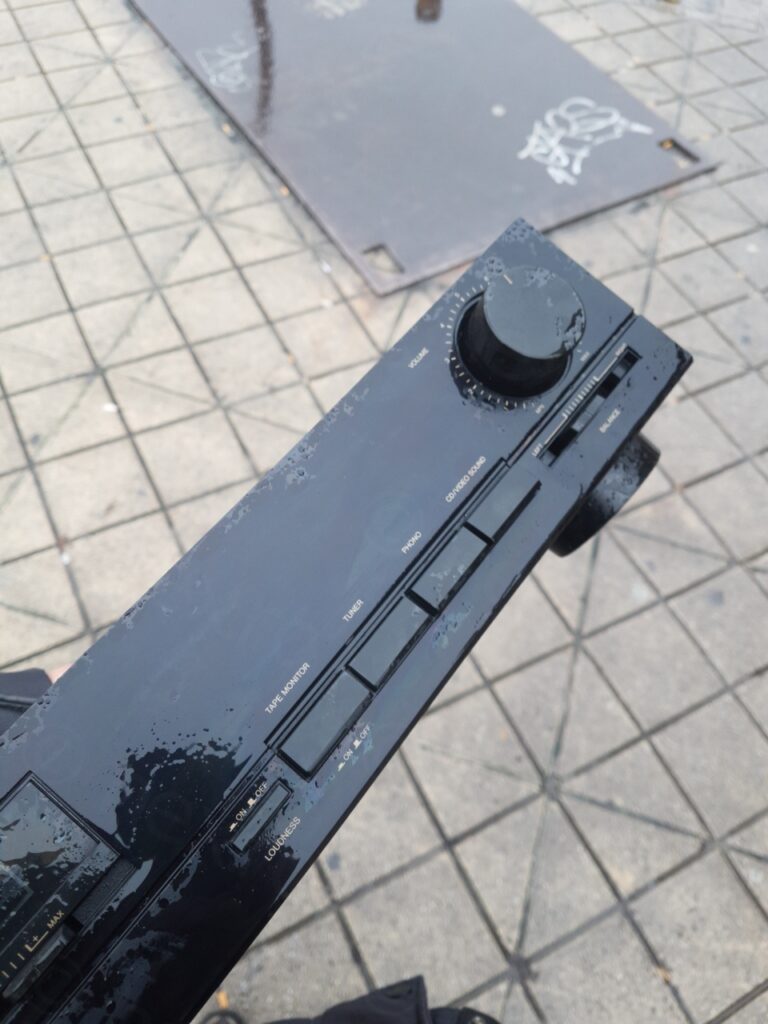
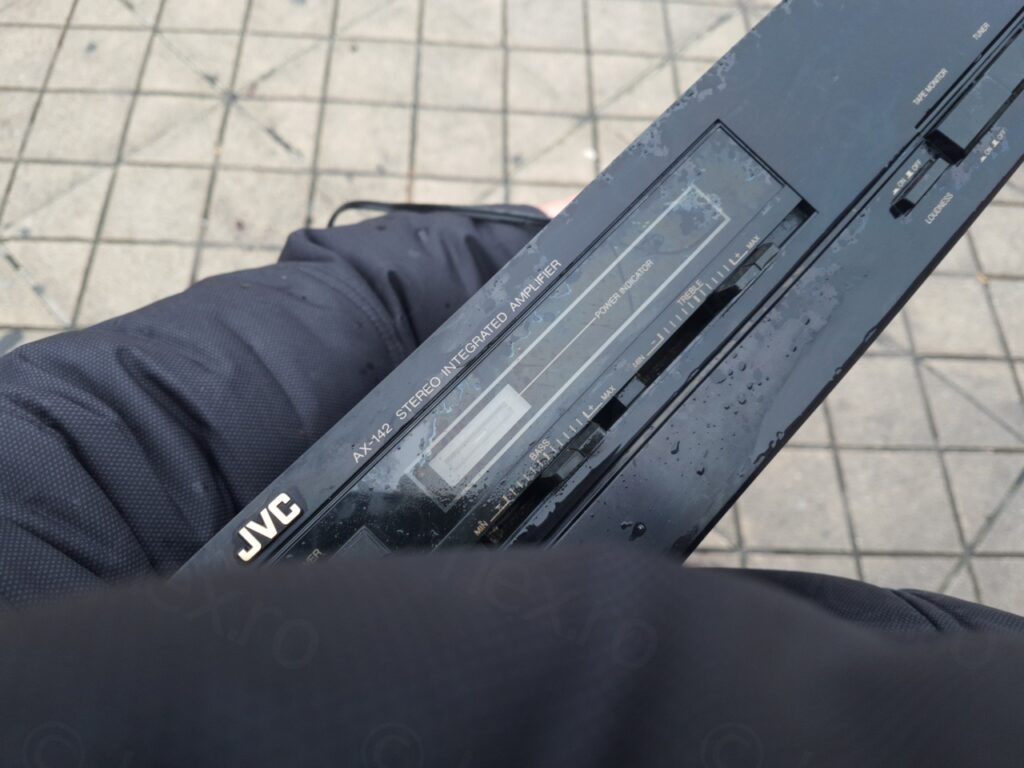

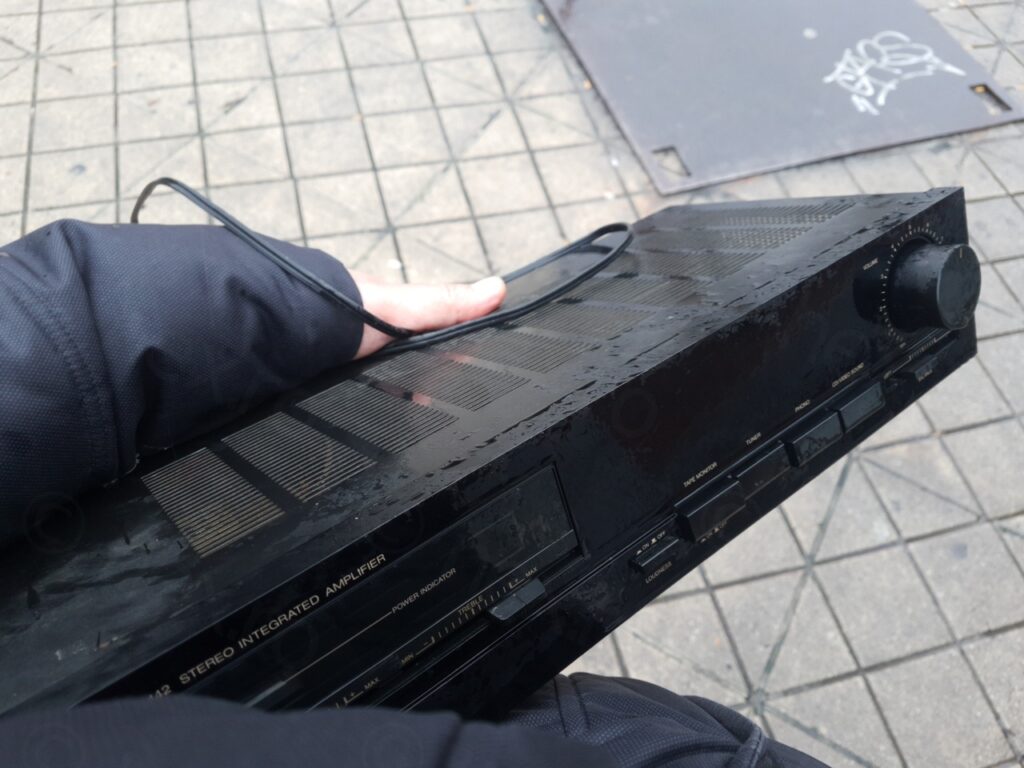
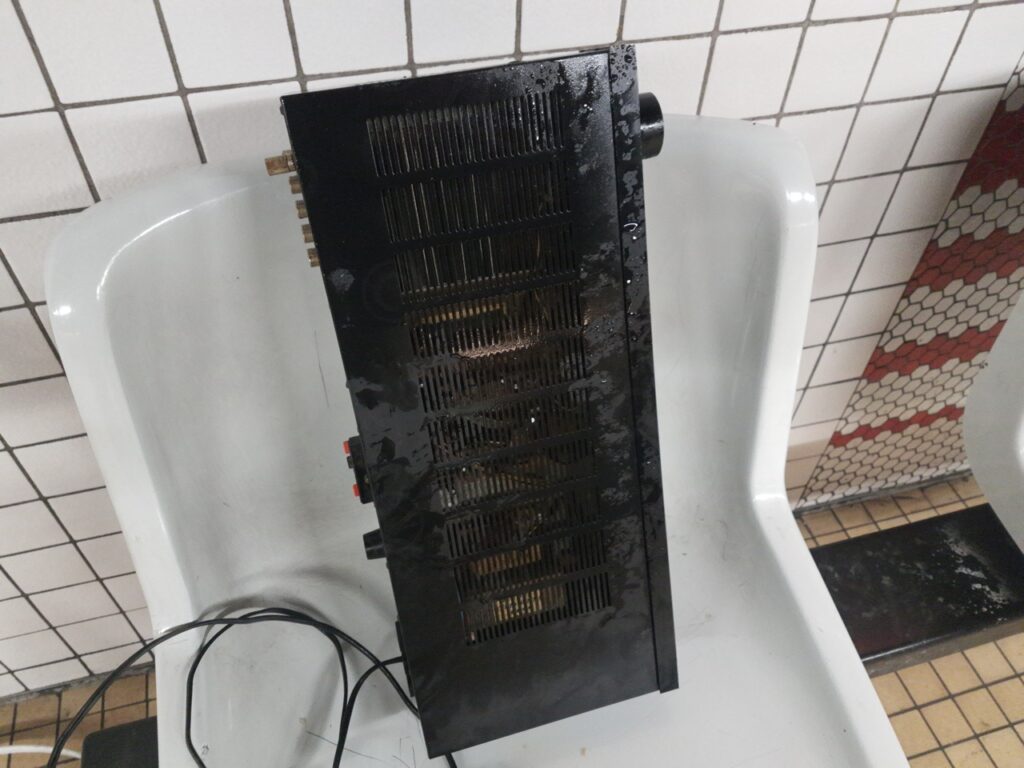
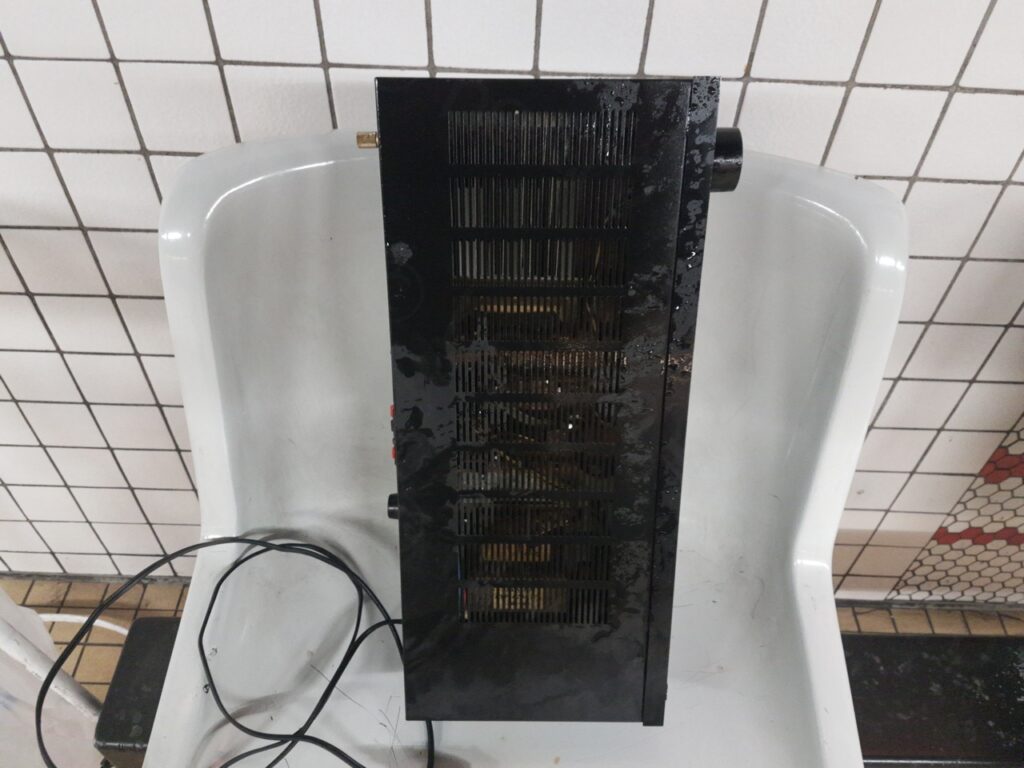
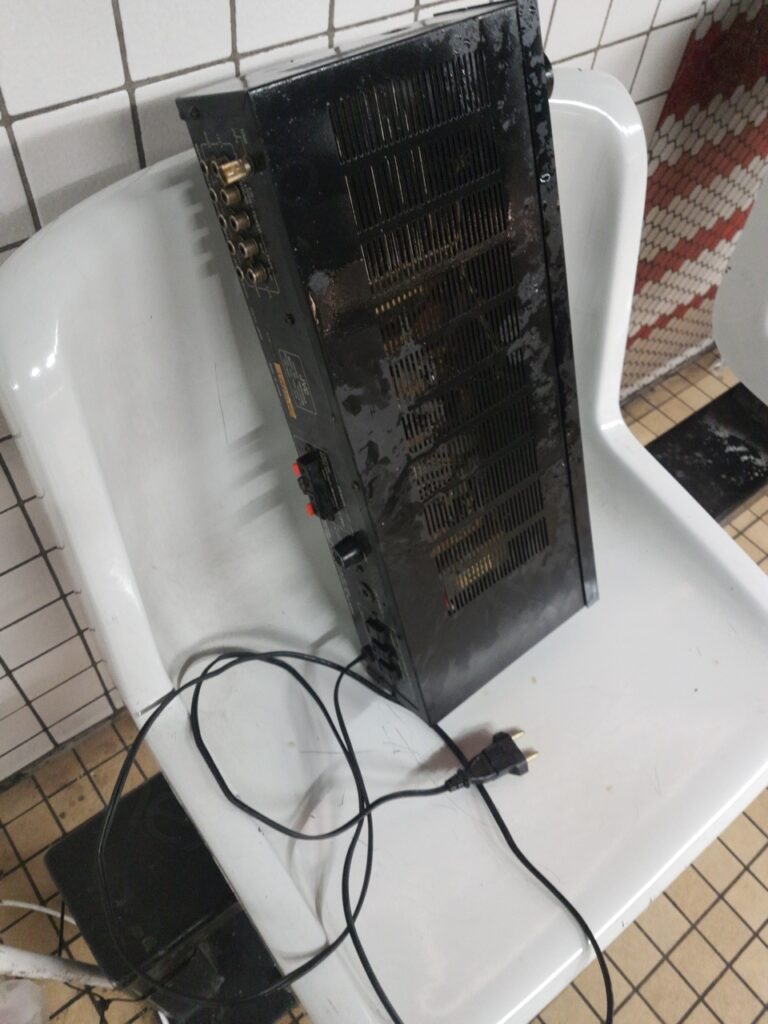
Once dried and running it through a quick test, two conclusions: audibly, it was imbalanced – the Right channel was louder than the Left; visually, dusty and yellowish. Up until noticing the imbalance, I was not too keen on opening it up, I was just eying the transformer. However, I decided to try to see where the imbalance may come from …
Exterior aspect and opening up
Dust everywhere.
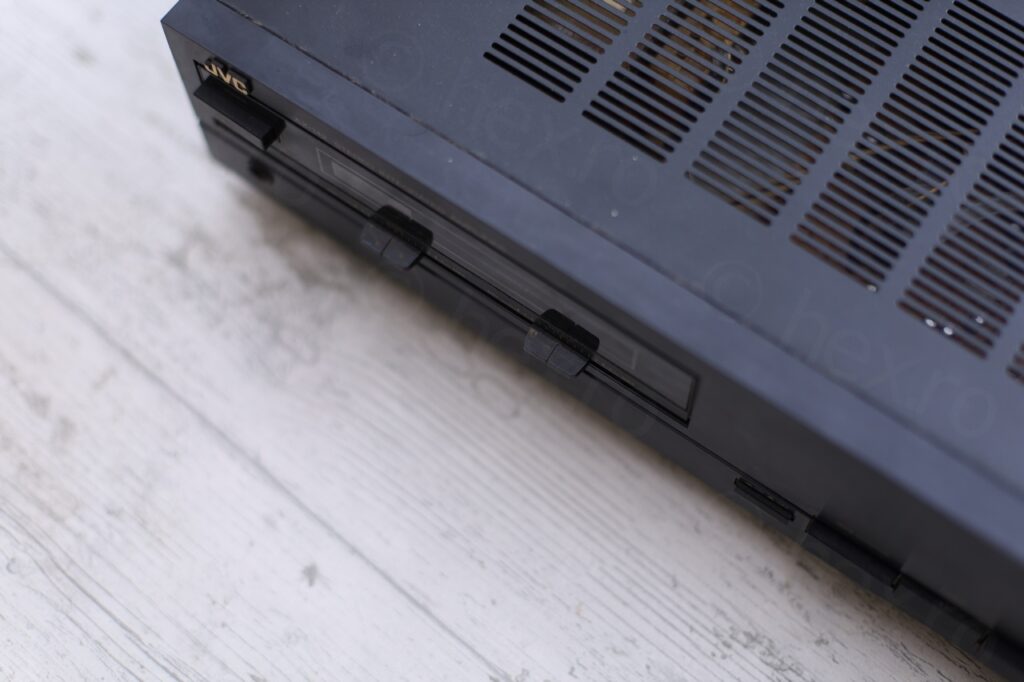
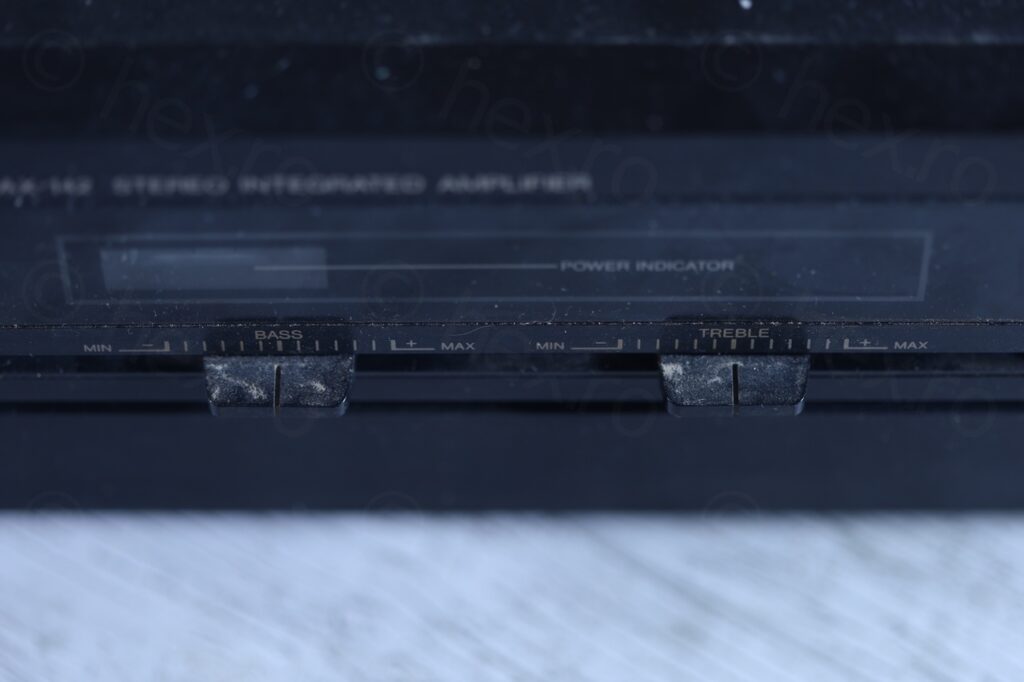
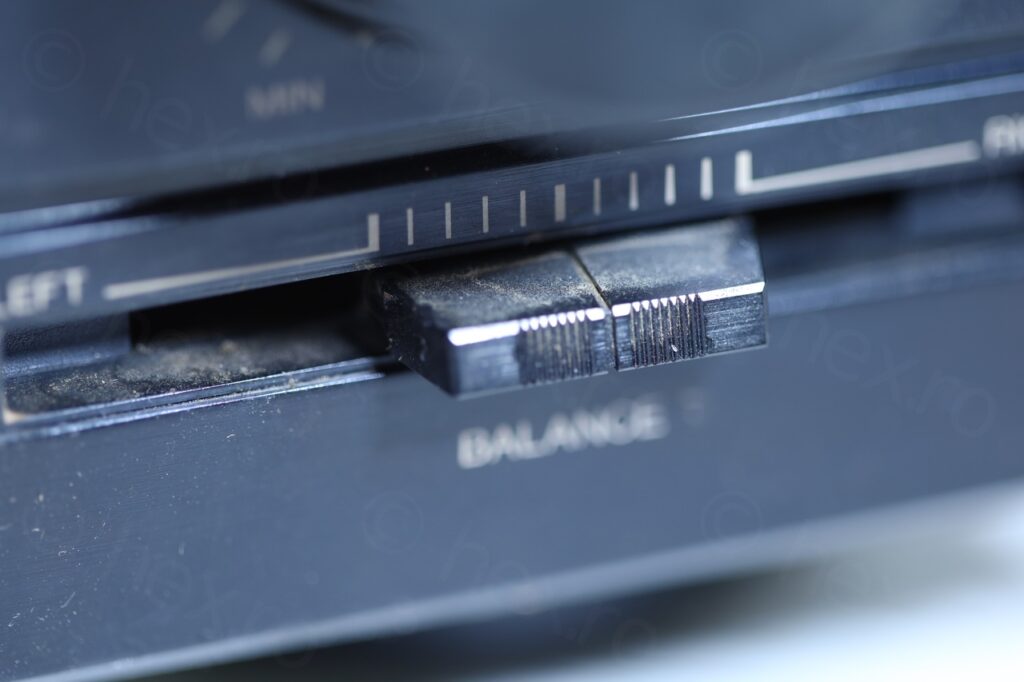

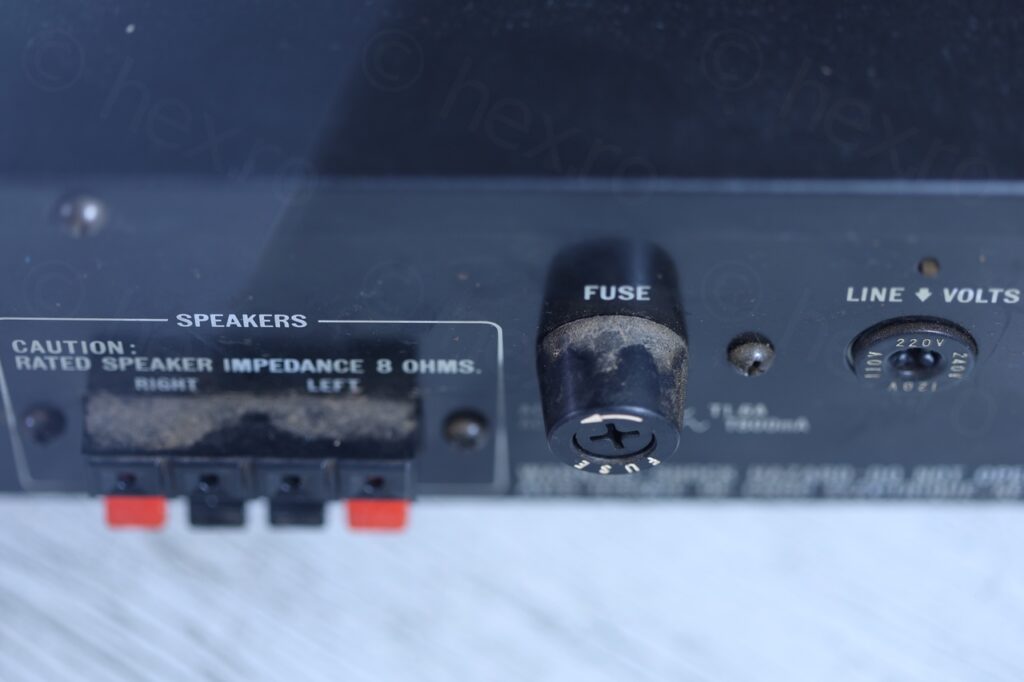
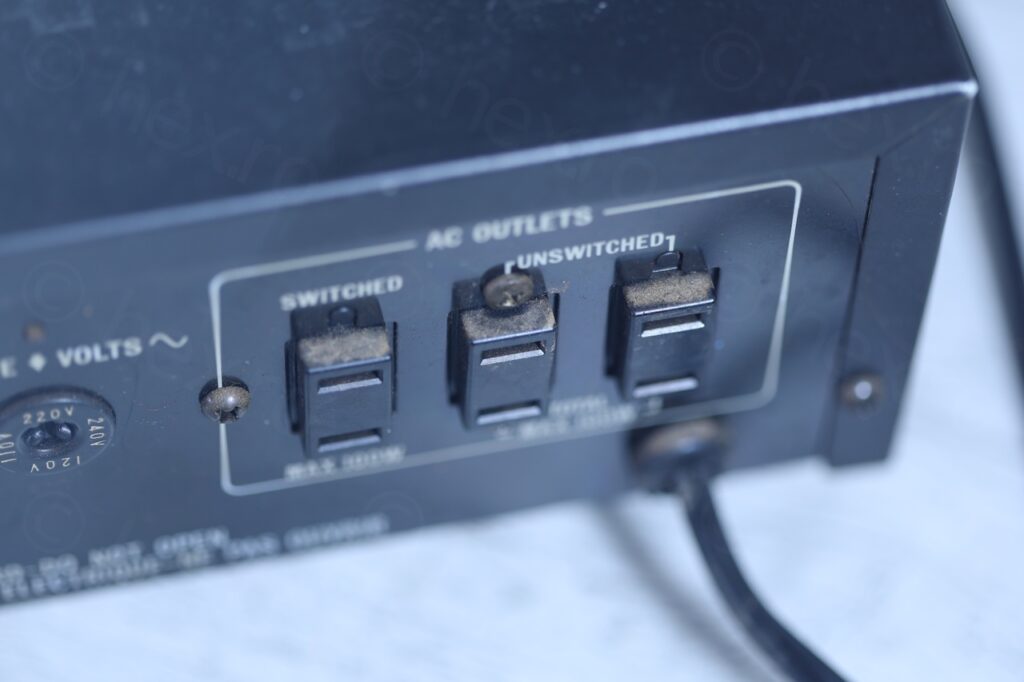
Getting inside was very easy, after removing 5 screws:
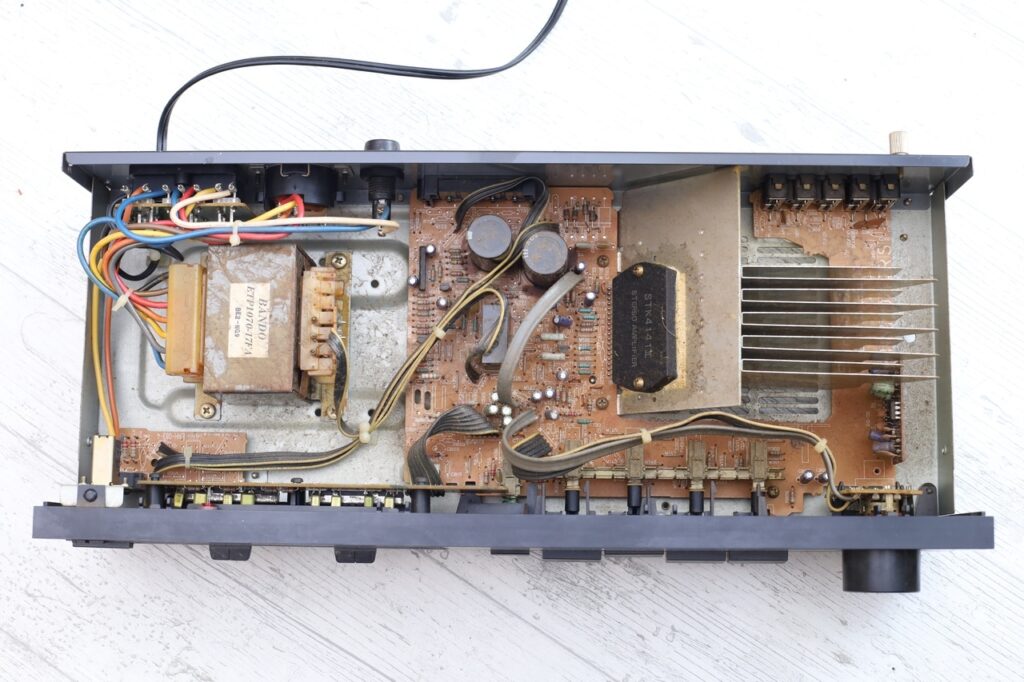
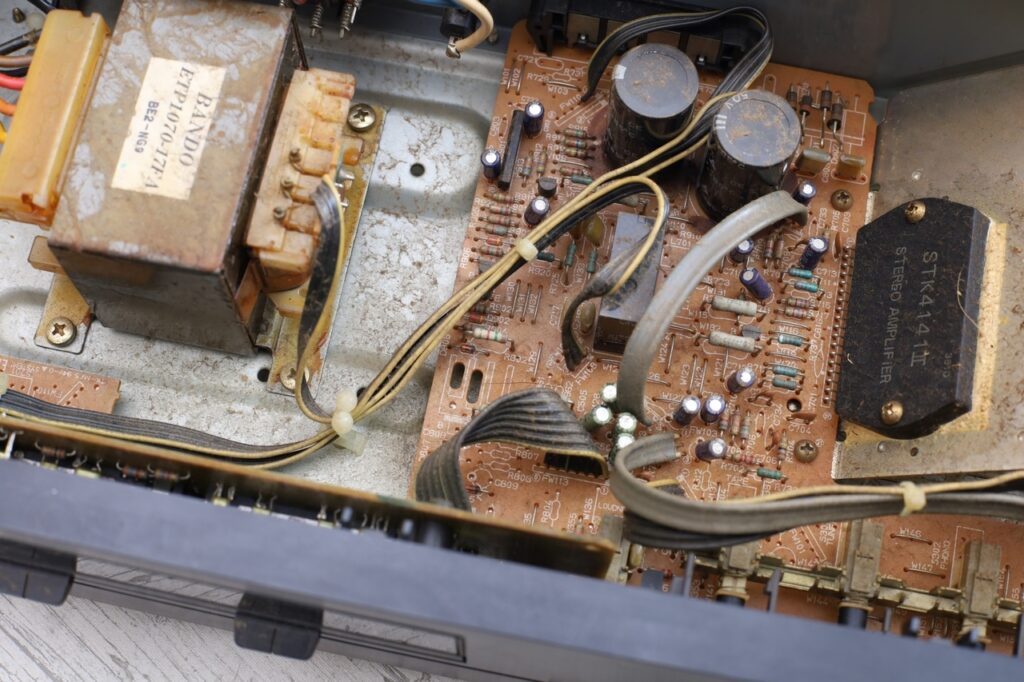
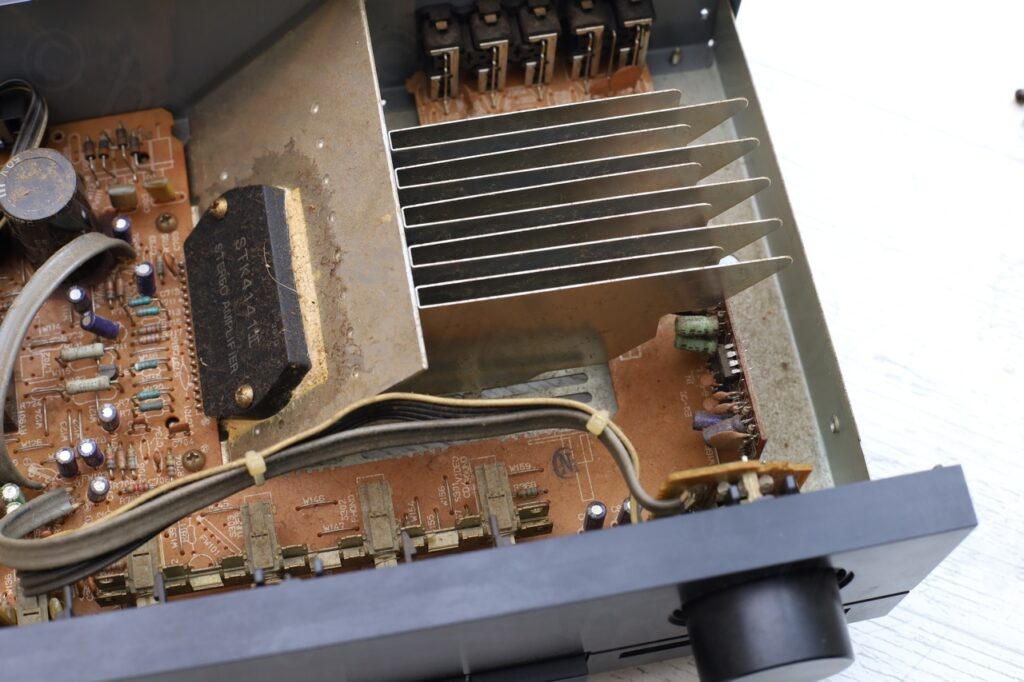
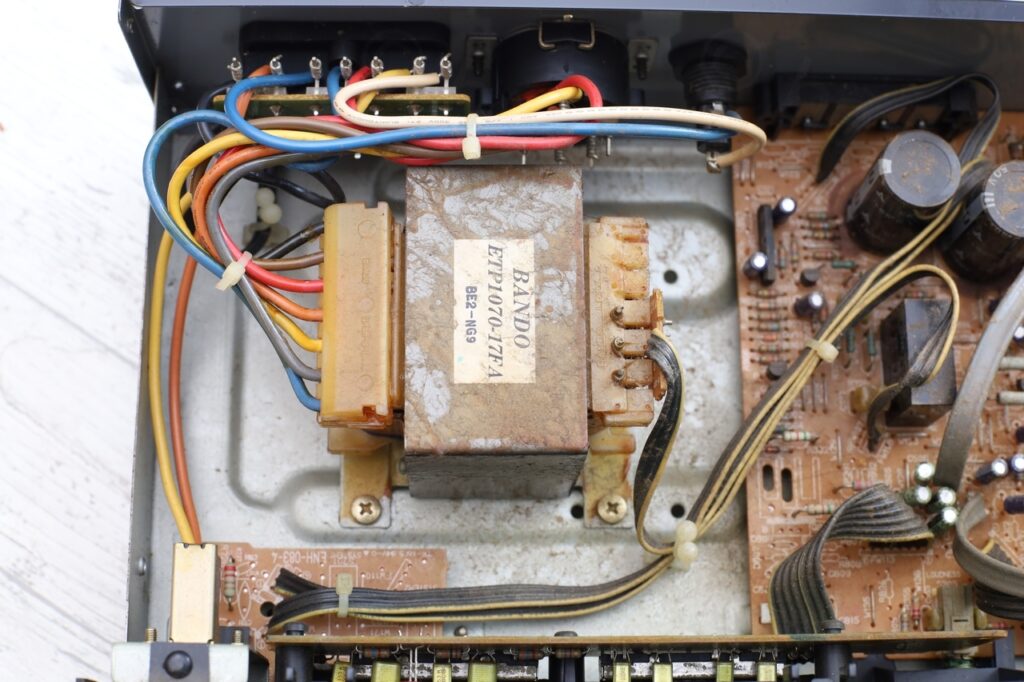
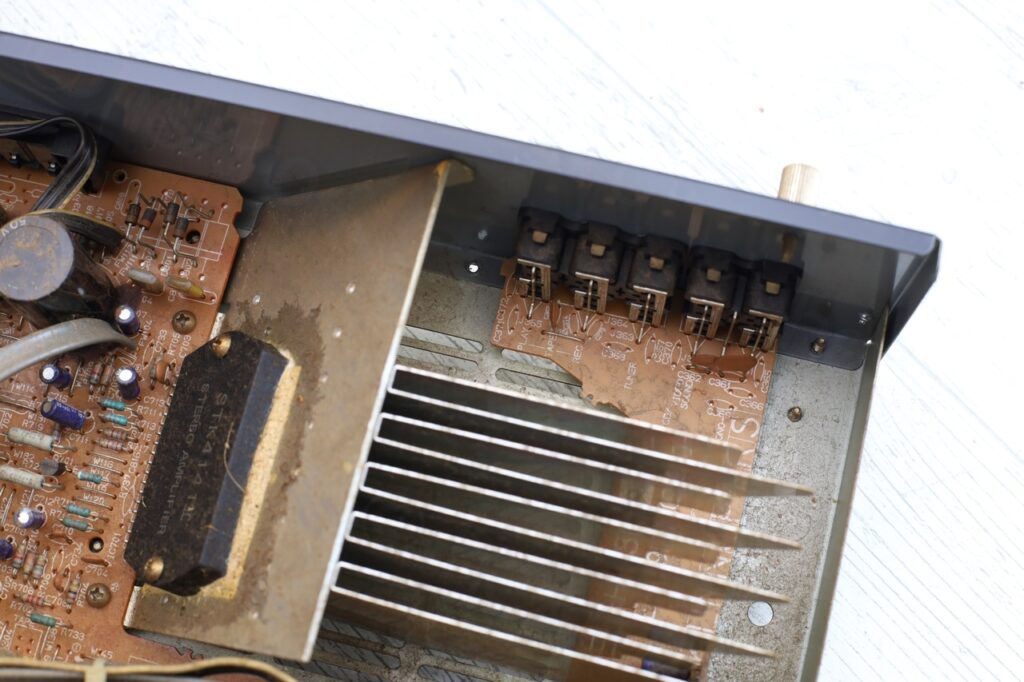


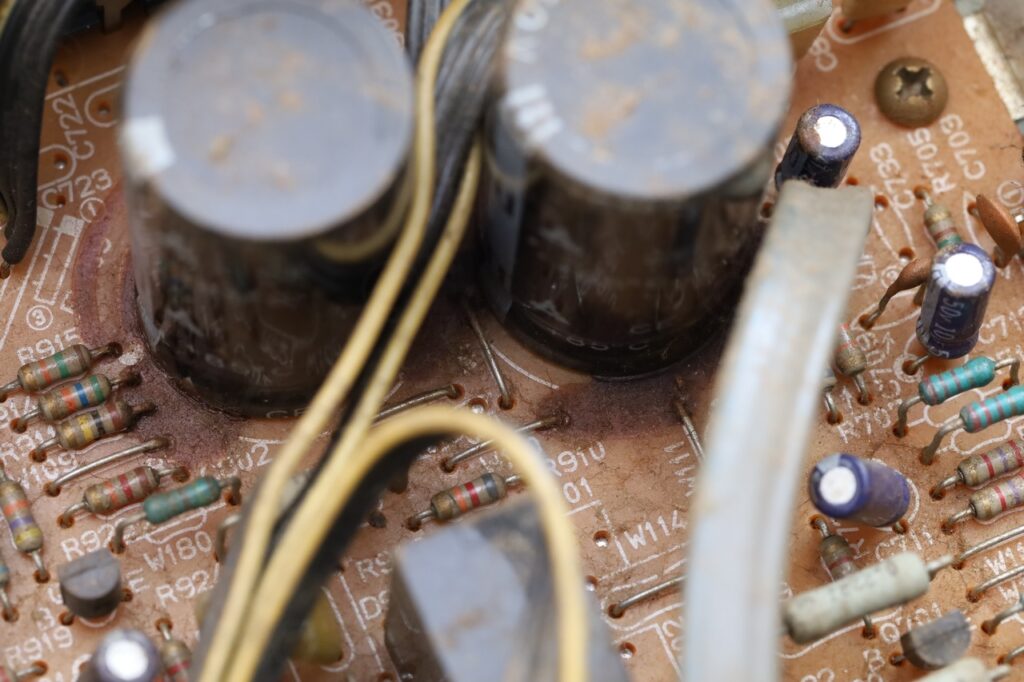
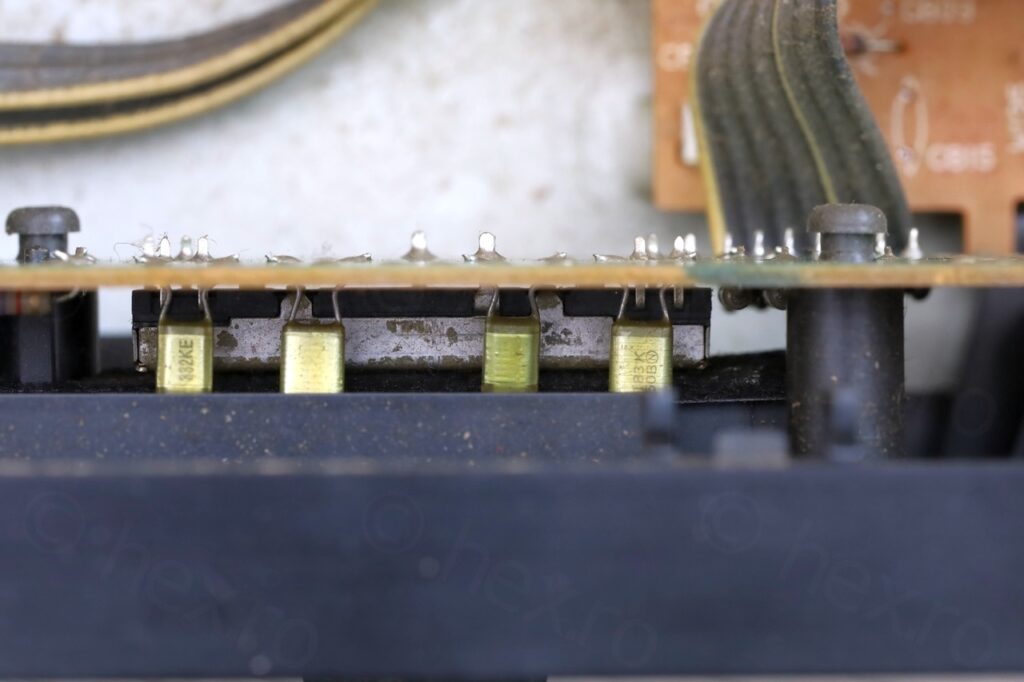
CD / Video Sound Selector Button
After installing two dummy loads and hooking up a small oscilloscope, the imbalance was visible on the traces too. Observed that just touching the CD/Video Sound Selector would change the amplitudes:
There was no hole through which I could inject contact cleaner, the only way seemed to try to pry out the plastic above the body of the button (after bending upwards the two small metallic hooks). Some oxidation was inside:
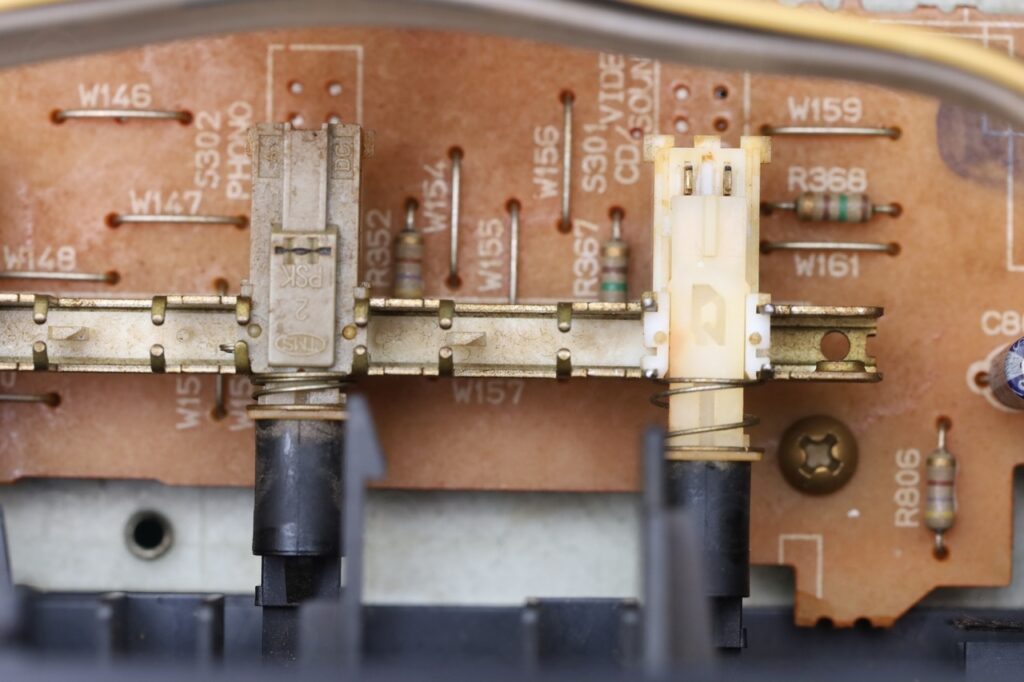
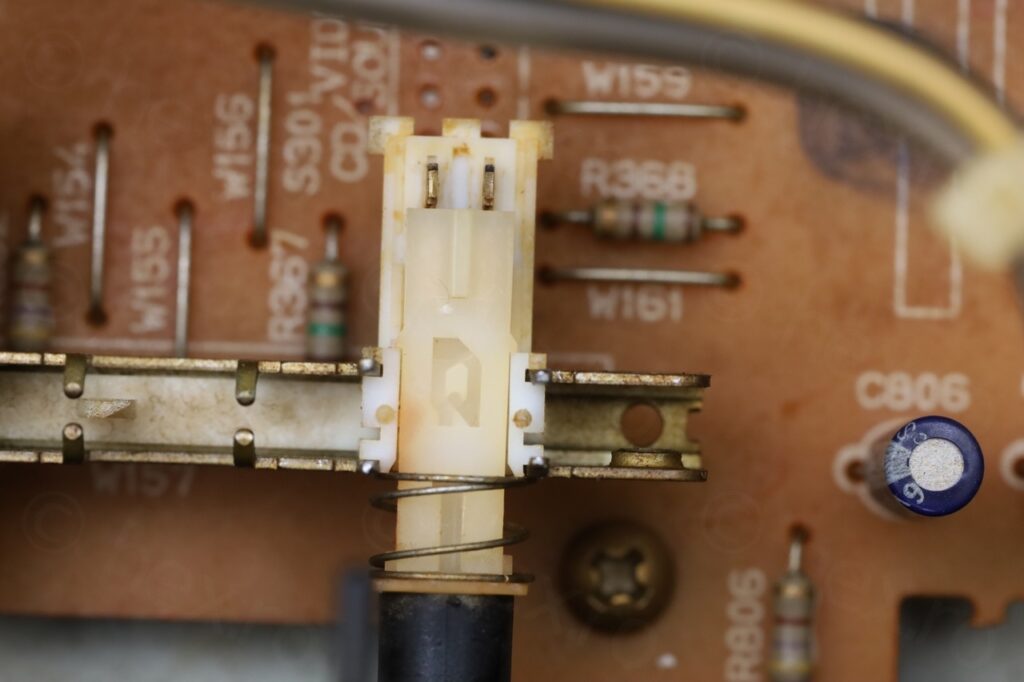

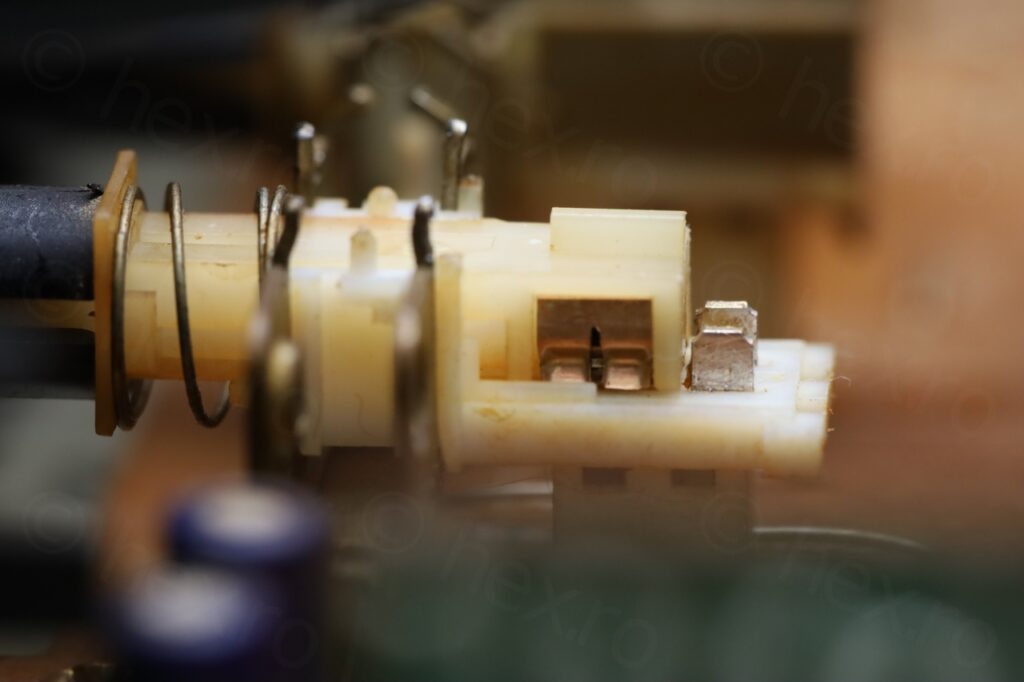
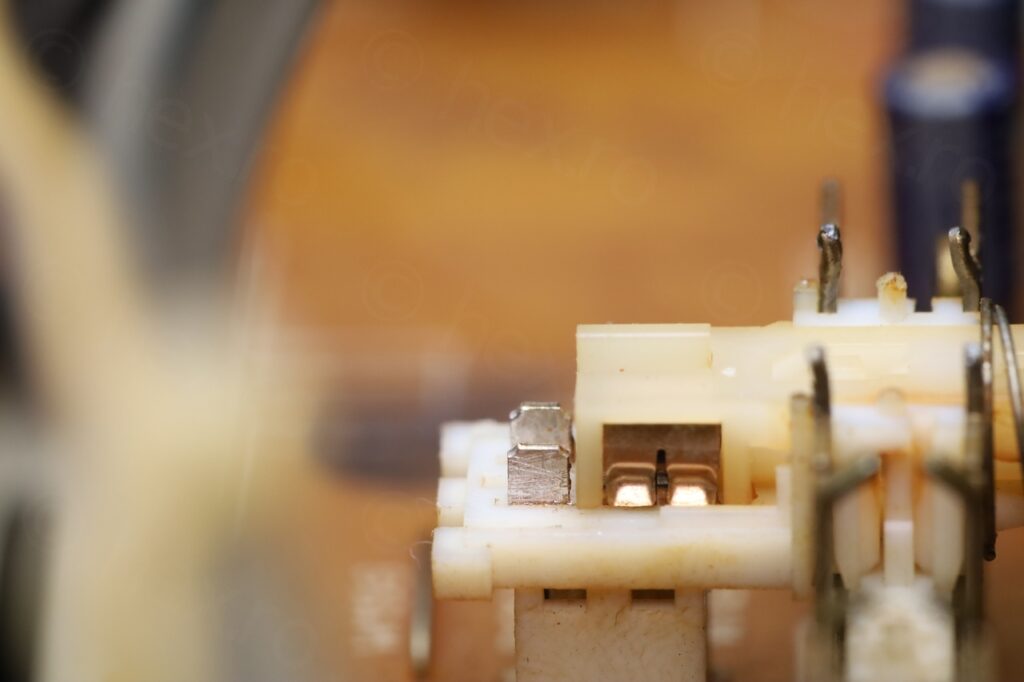
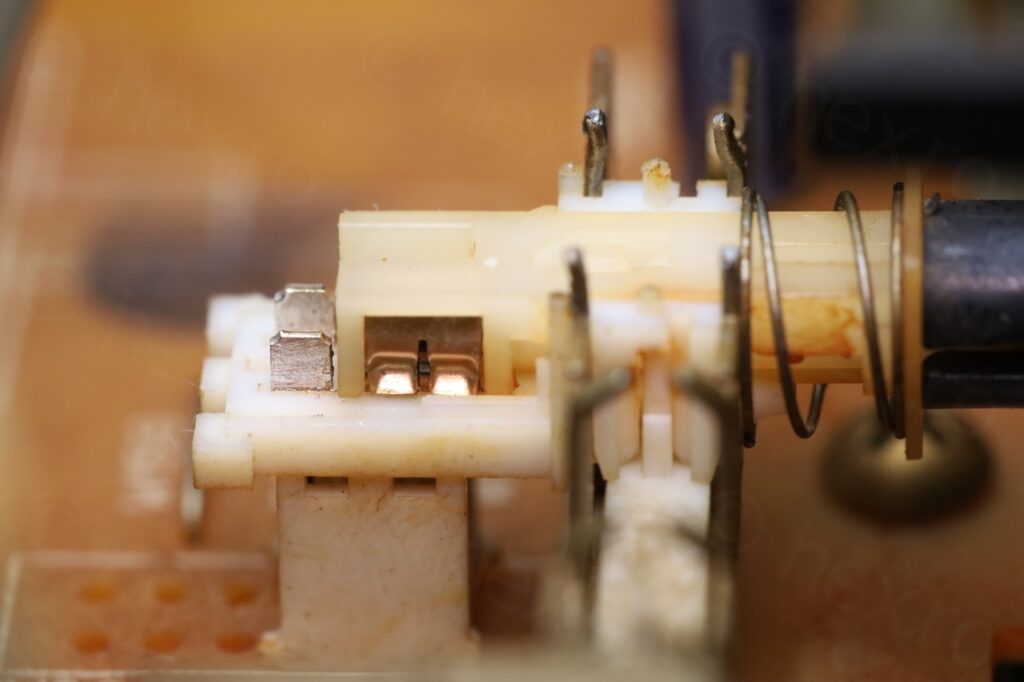

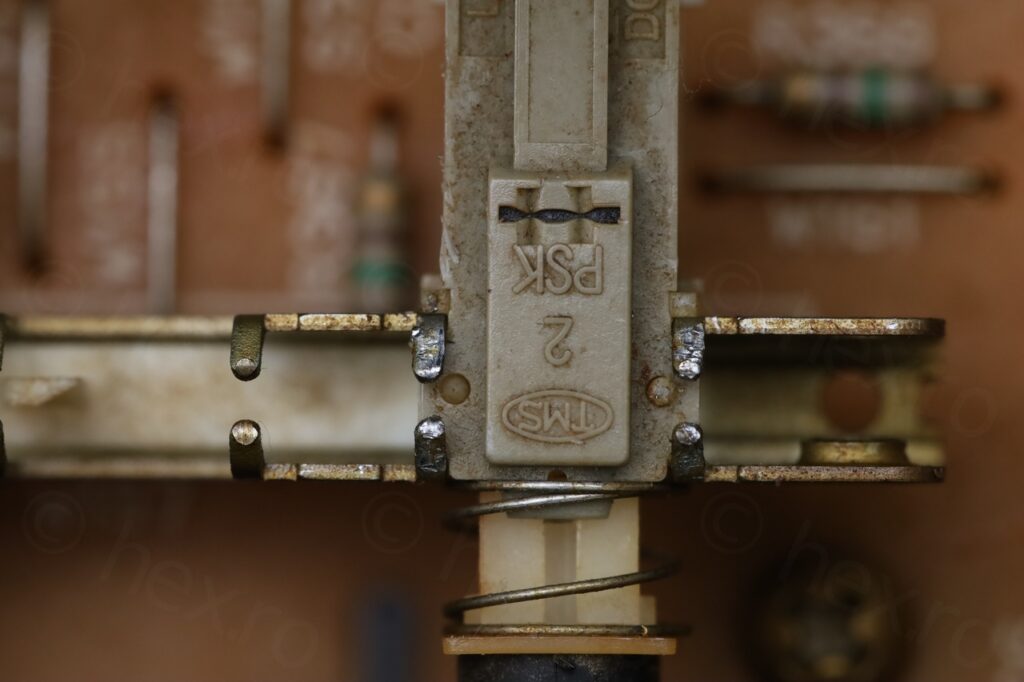
Switch started behaving normally once the oxidation was manually cleaned – no more influence on the traces:
This did not remove the imbalance though… Sometimes the amplifier would have a small imbalance after power on, sometimes a more pronounced one.
OMRON G5R-2232P Relay – opening up
This randomness upon Power On made me suspect a possible cold joint, so I have started tapping on the circuit board.
Not surprisingly, found one more source that had a very large impact on the output signal – the Omron G5R-2232P protection relay. Tapping on the relay would even reduce the output to more than half on one channel. However, turning the volume up to the maximum and back down again would clear the imbalance. I figured this is a “punch-through” effect, where the higher current passing through the relay would find a way through the oxidation layer. See below the effect of the tapping:
The relay had to be opened. To get to the underside, the whole circuit board had to be taken out, which was rather tedious.
A short visual inspection revealed another problem -> a forgotten solder piece that was glued to the circuit board, as you can see in the first photo below:
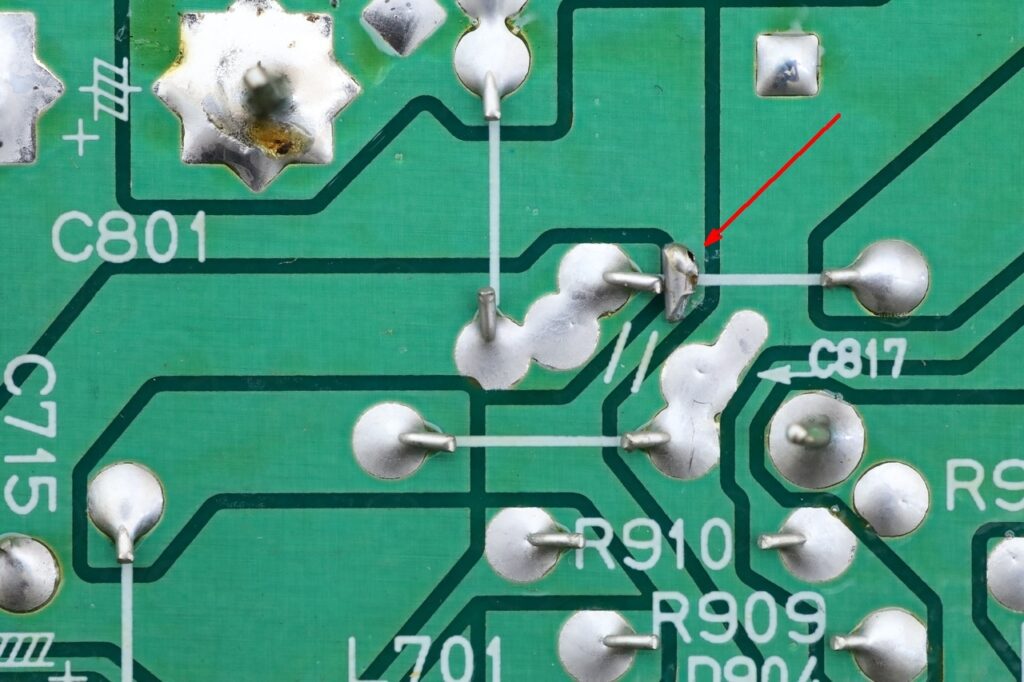

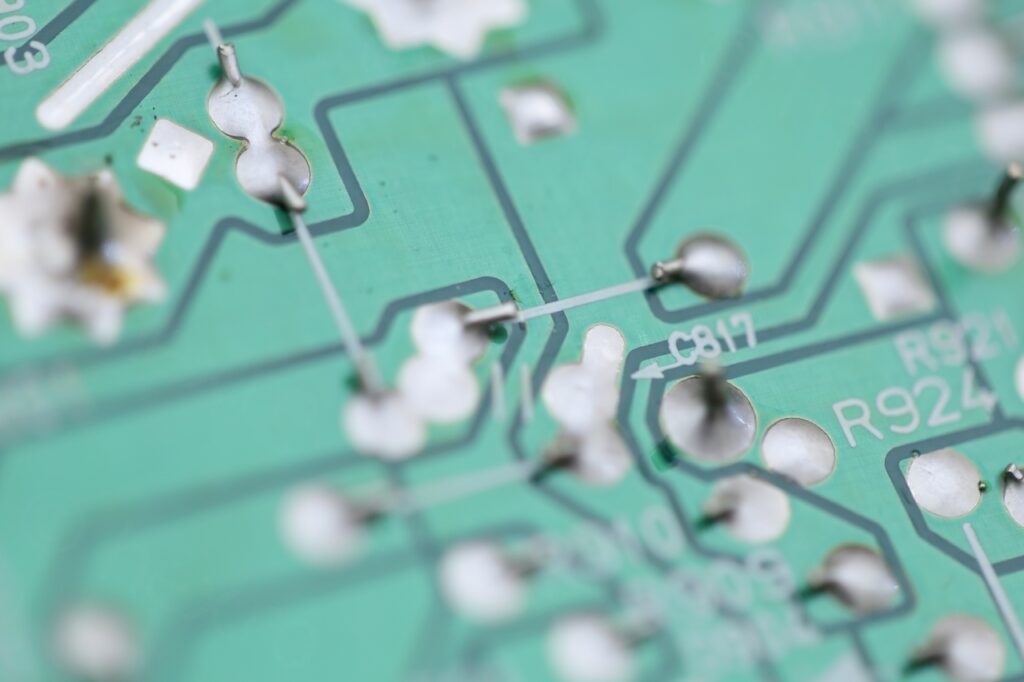
There was a chance that the piece of solder would make contact between the adjacent circuit traces, but this was not the case.
I proceeded to take apart the relay switch, which was heavily oxidized inside. Using a 600 grit sand paper, cut in very thin slices, I gently removed as much oxidation as I could:


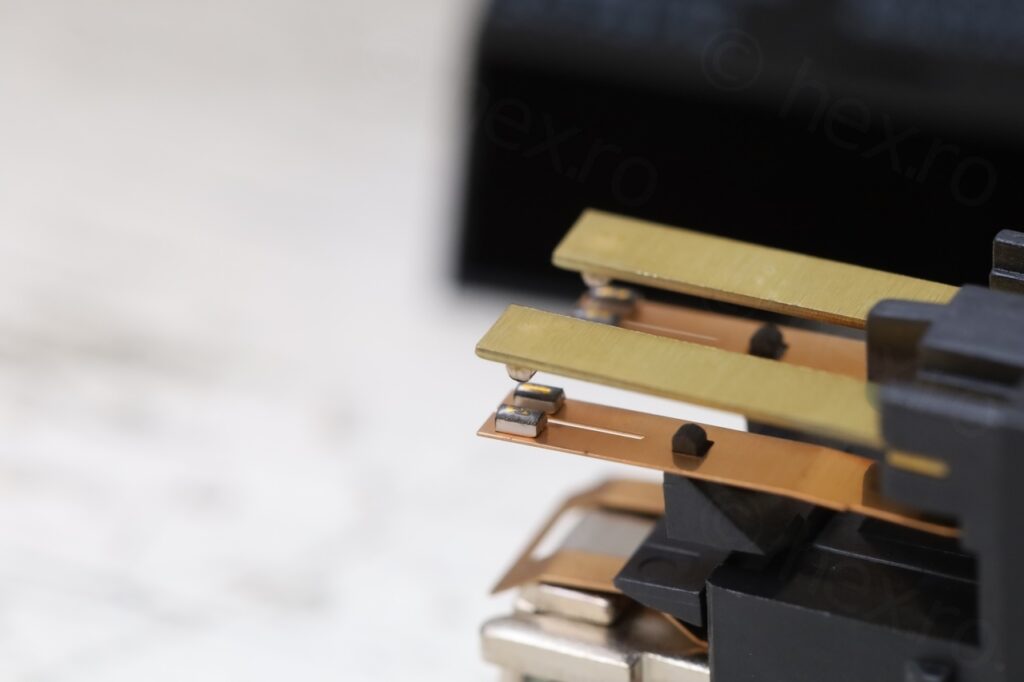
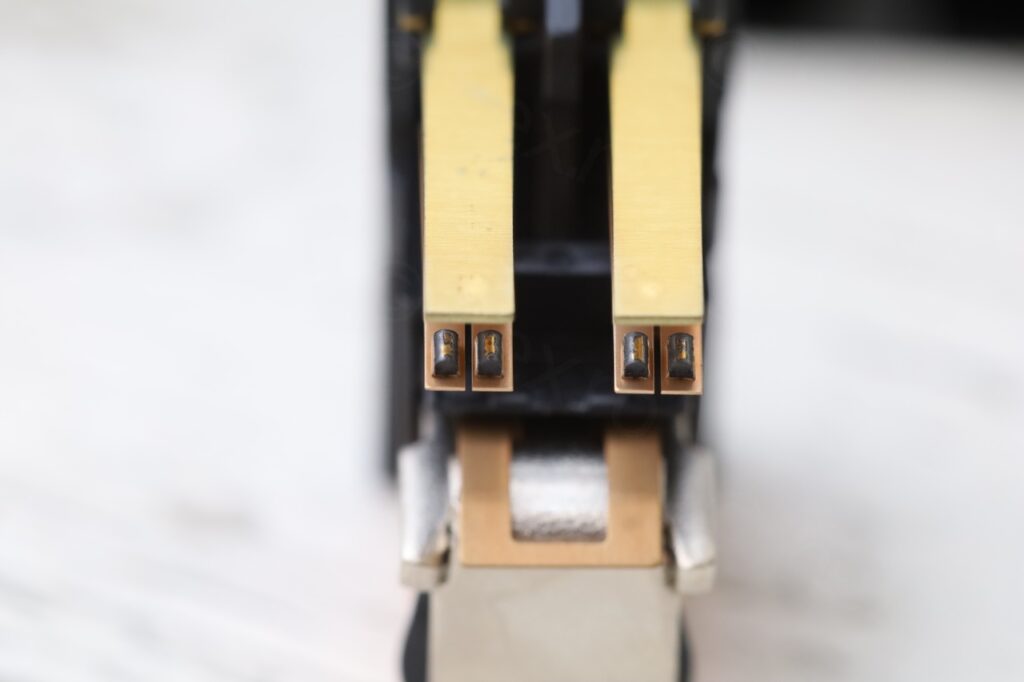

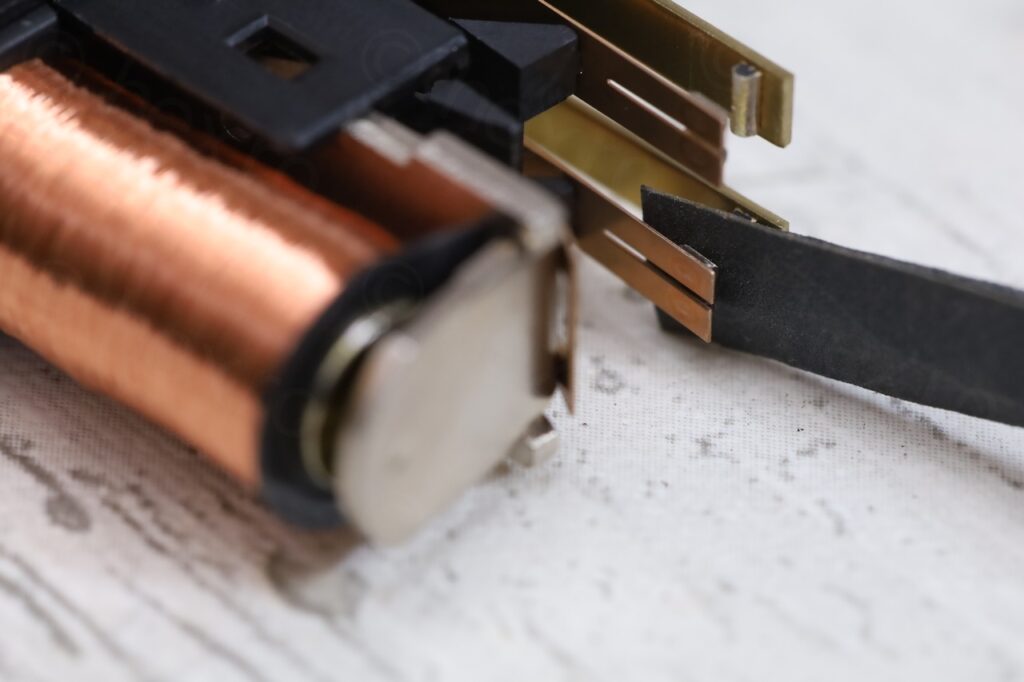
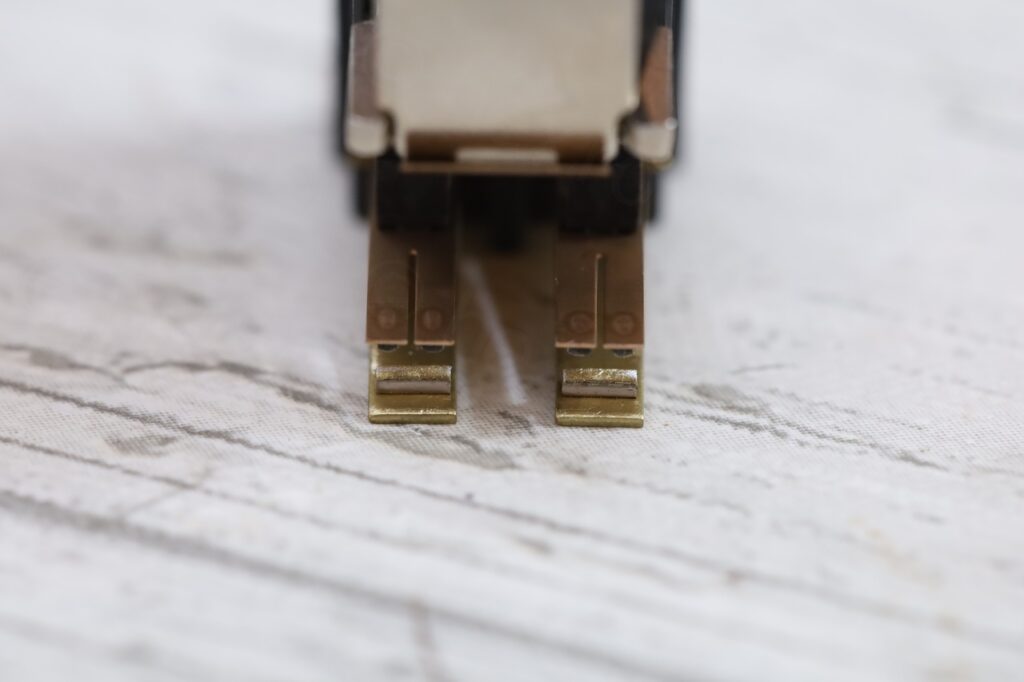
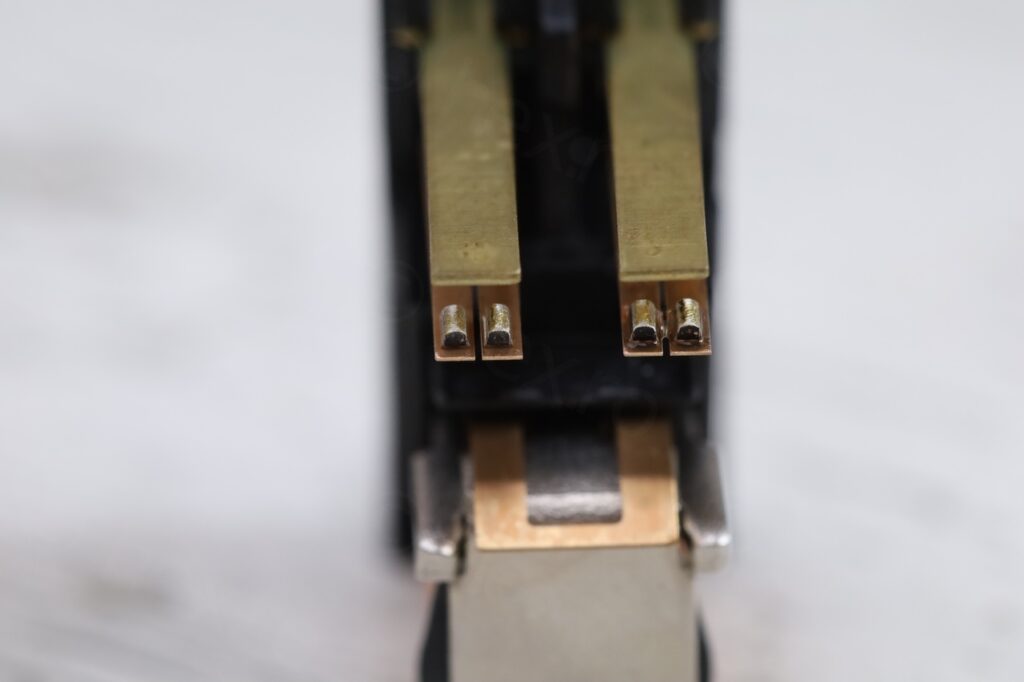

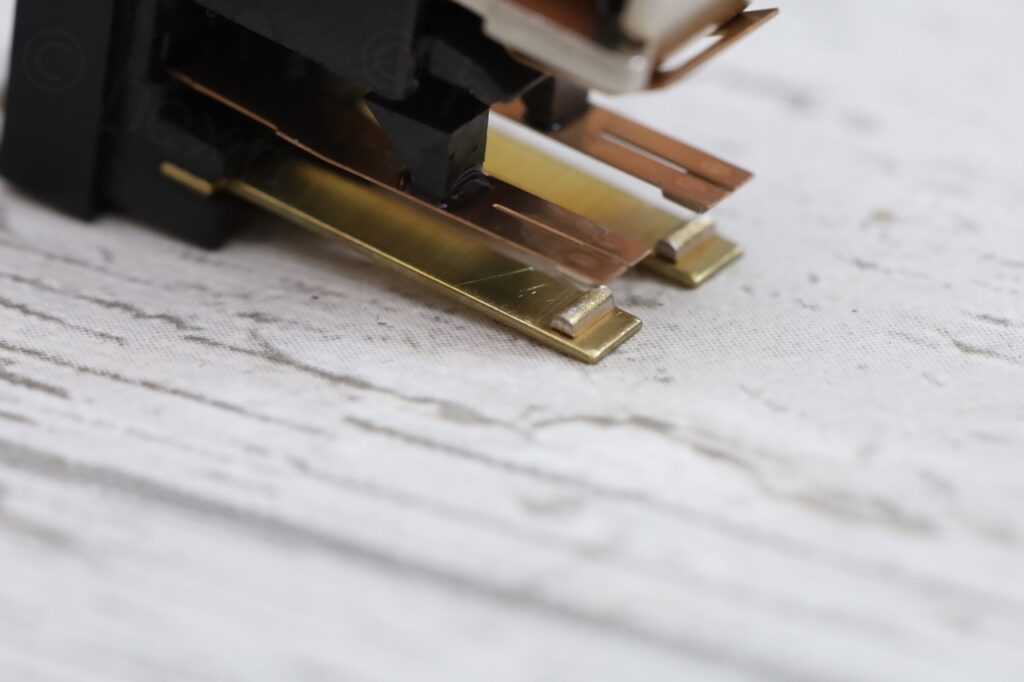
After reassembly …
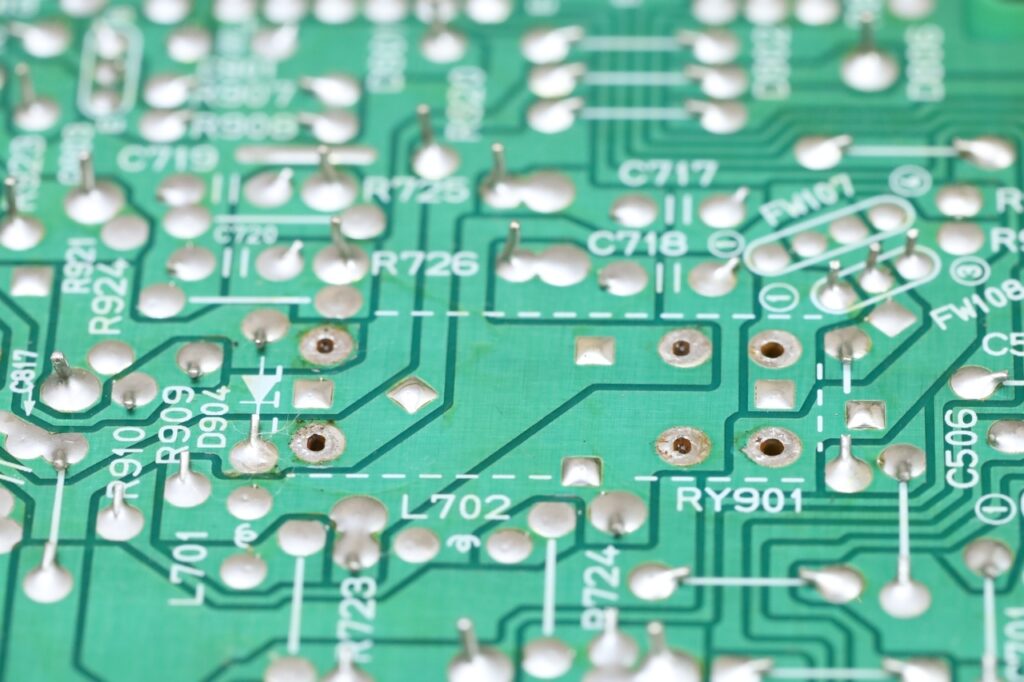
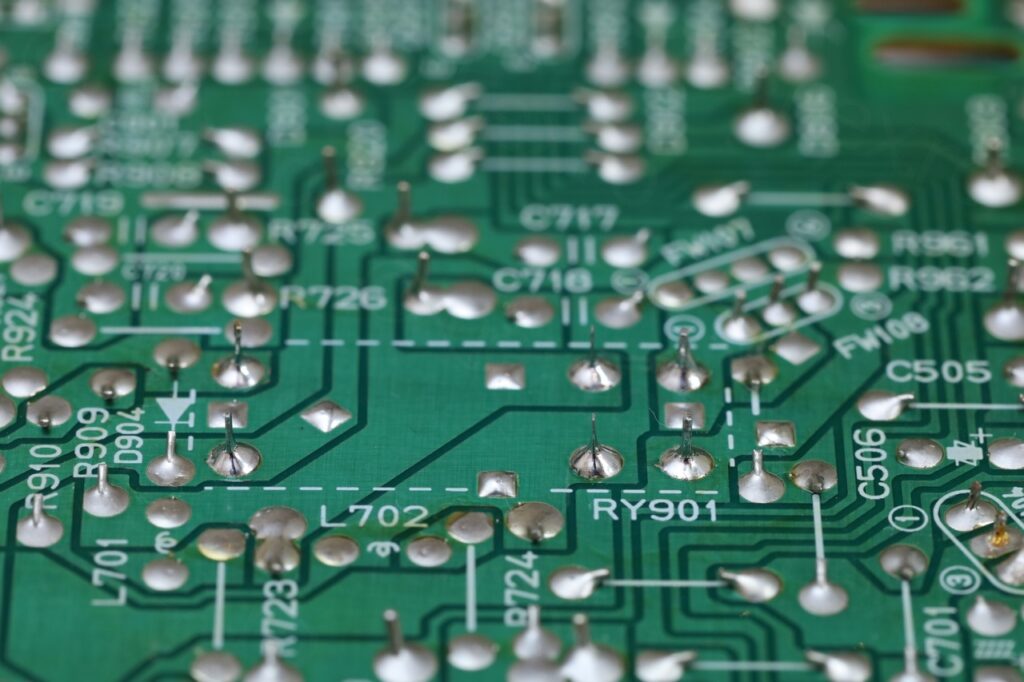
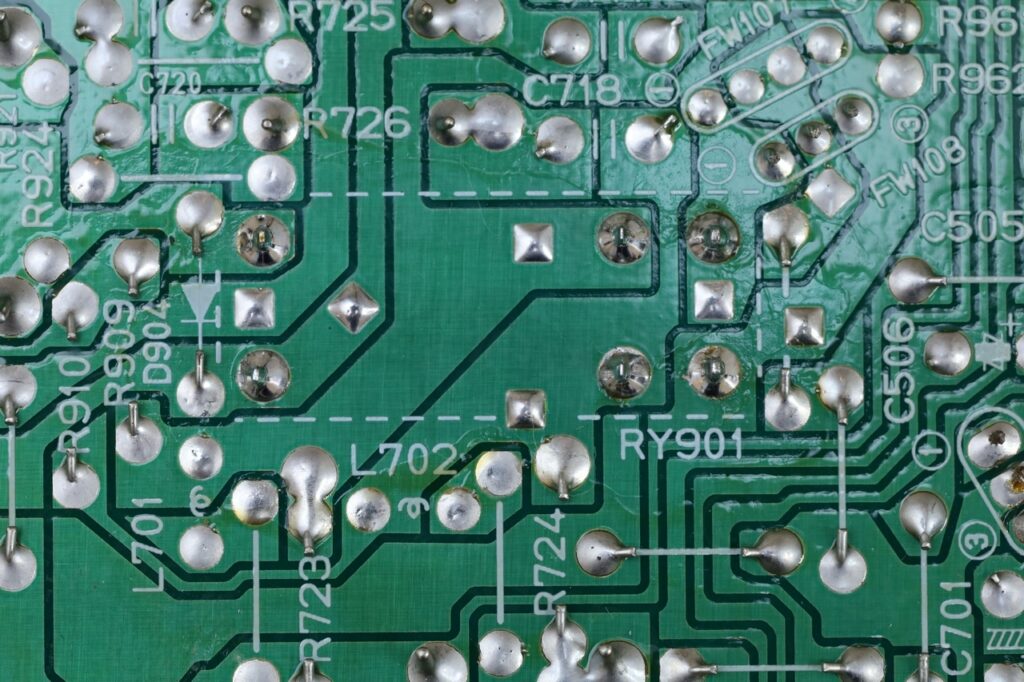
… there was no influence anymore on the output volume, when tapping on the reply:
Volume Pot
Cleaning both the CD/Video Sound selector switch and the Omron G5R-2232P did not fix the imbalance unfortunately.
Pushing upwards or downwards on the Volume Potentiometer also has an impact on the output imbalance:
No amount of contact cleaner fixed it. It seems a mechanical problem, pushing upwards I can also feel the volume potentiometer making a small click – as if the cylinder it goes through is a little too wide for the shaft itself ?
Output quality
There is a DC imbalance between the outputs, not a lot, but it is there:
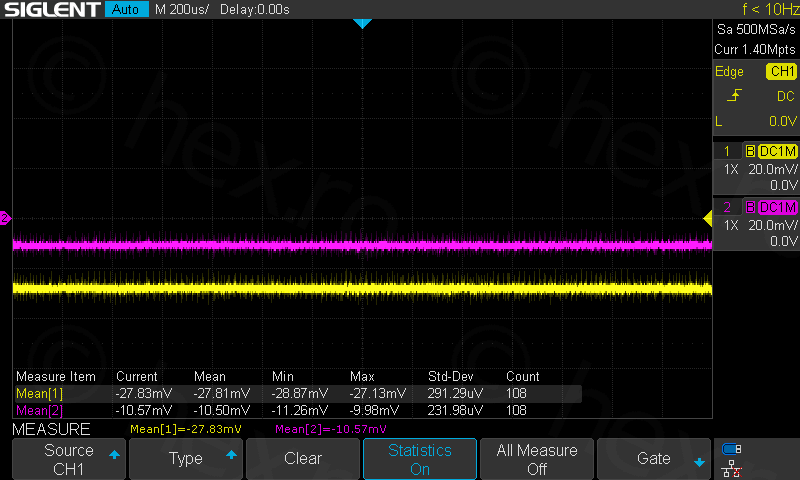
The THD of the device was rated to 0.05% by the manufacturer. I didn’t calculate it, but I was curious to see the FFT of a 1KHz signal:
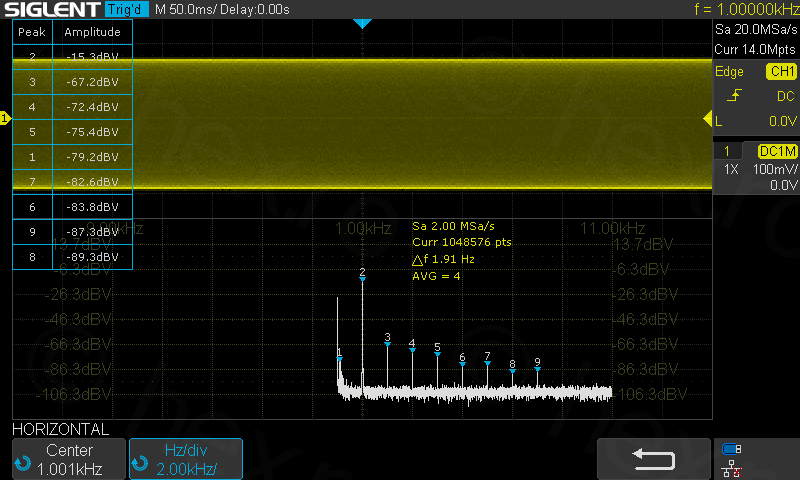
Cleaning up
Since the circuit board was out, the last remaining thing to do was to thoroughly clean up the device:
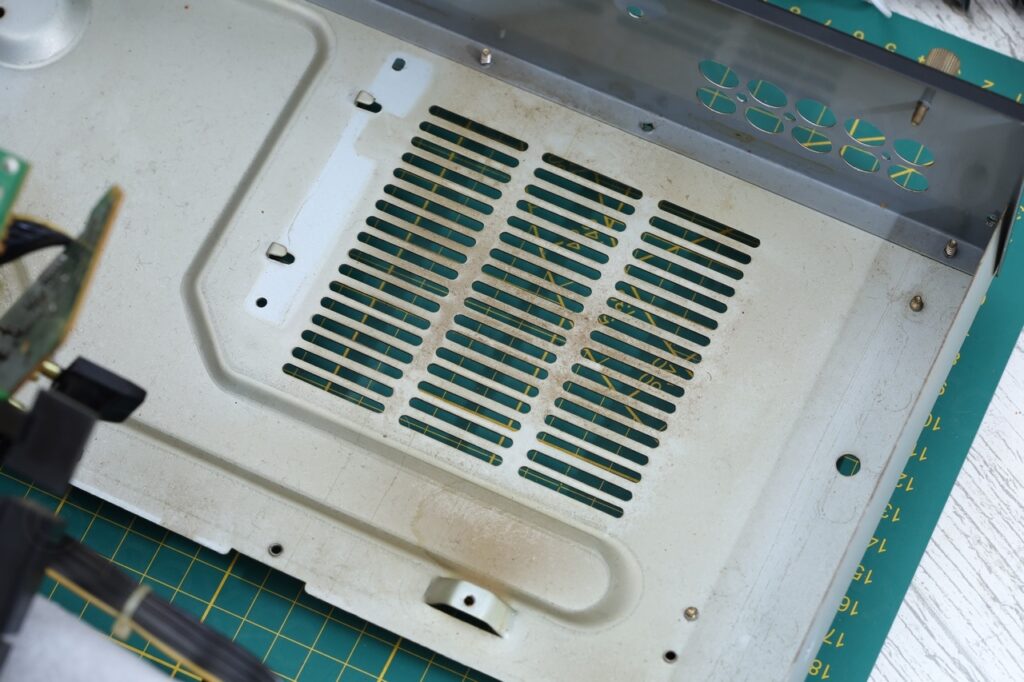
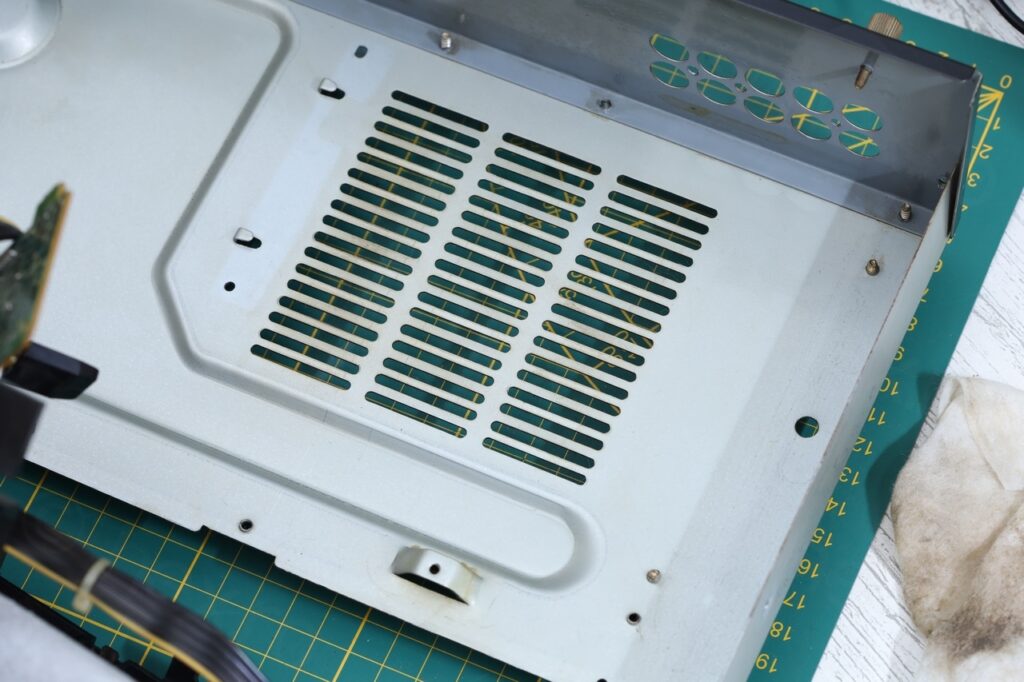
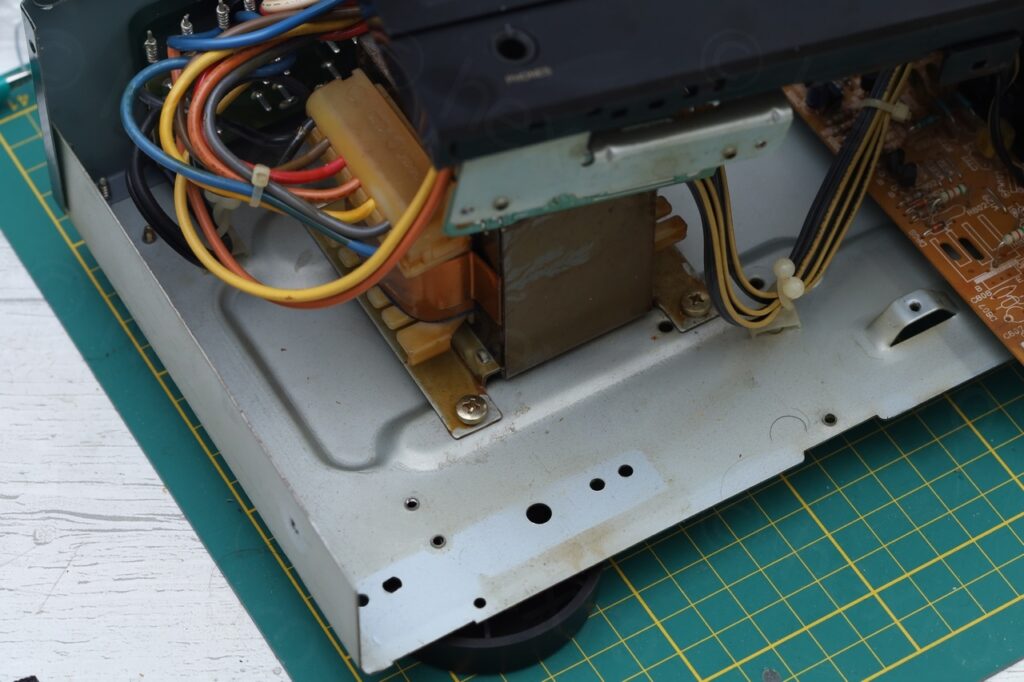
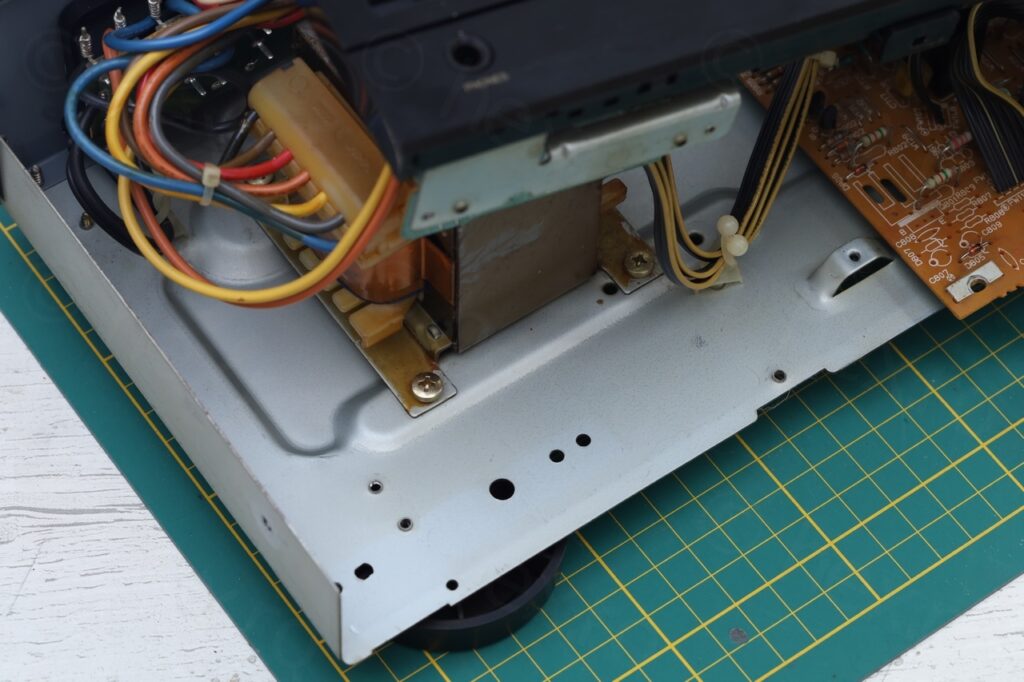
Few more photos before closing it up:
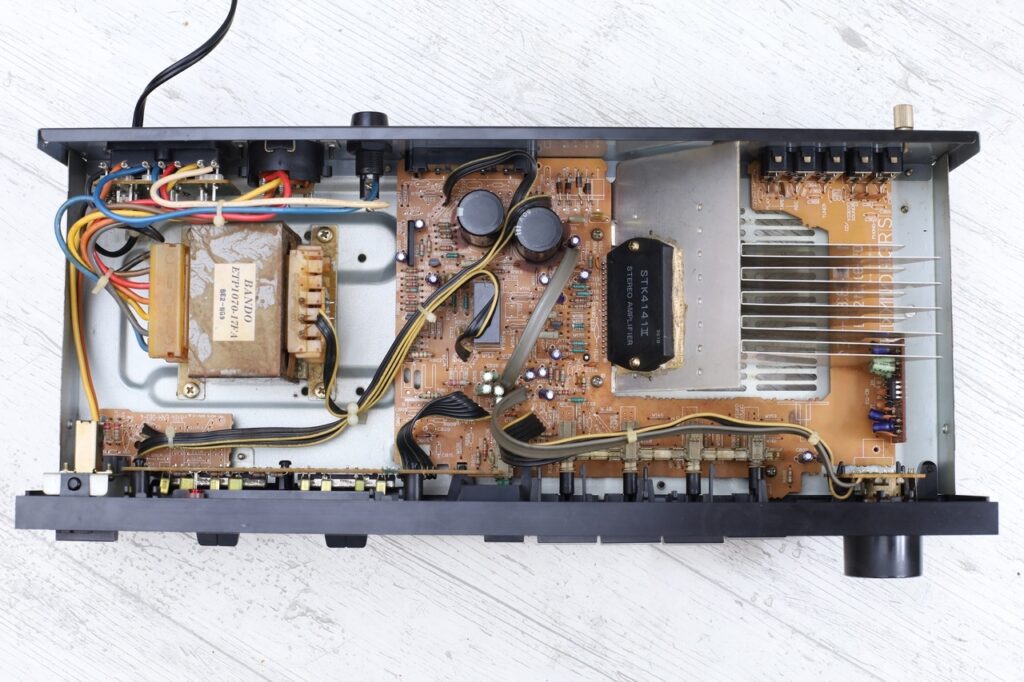
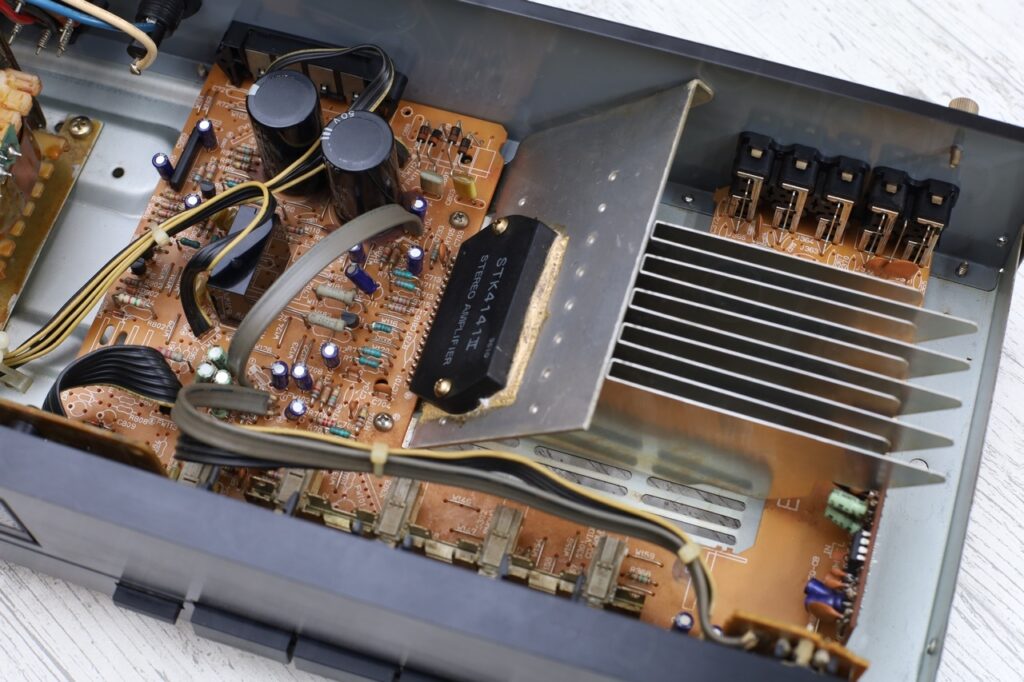

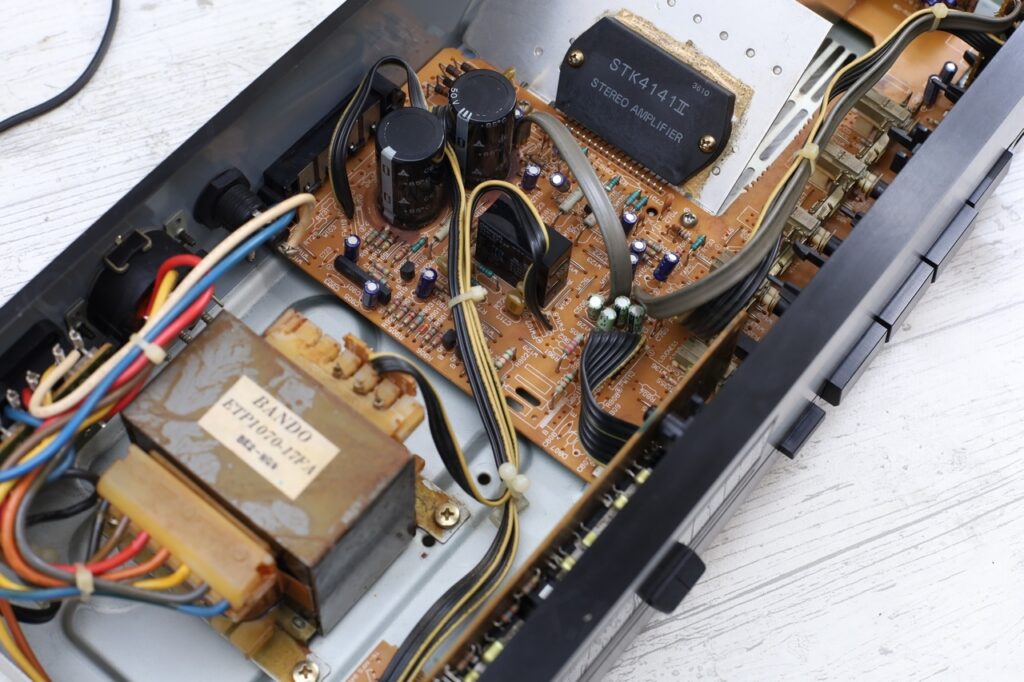

Putting it all back together:
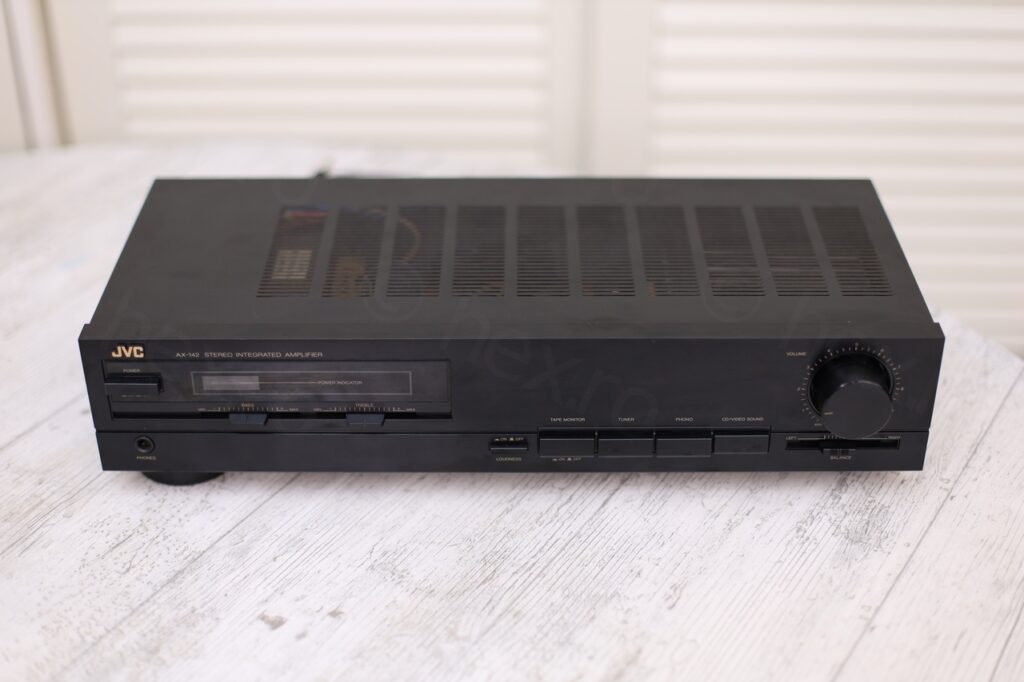

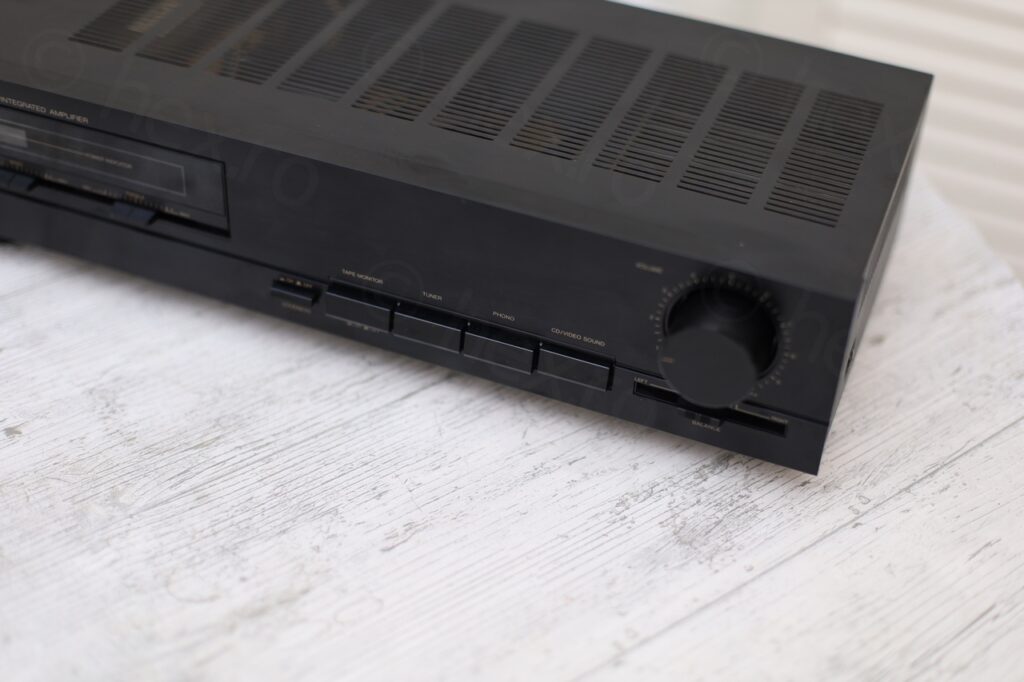

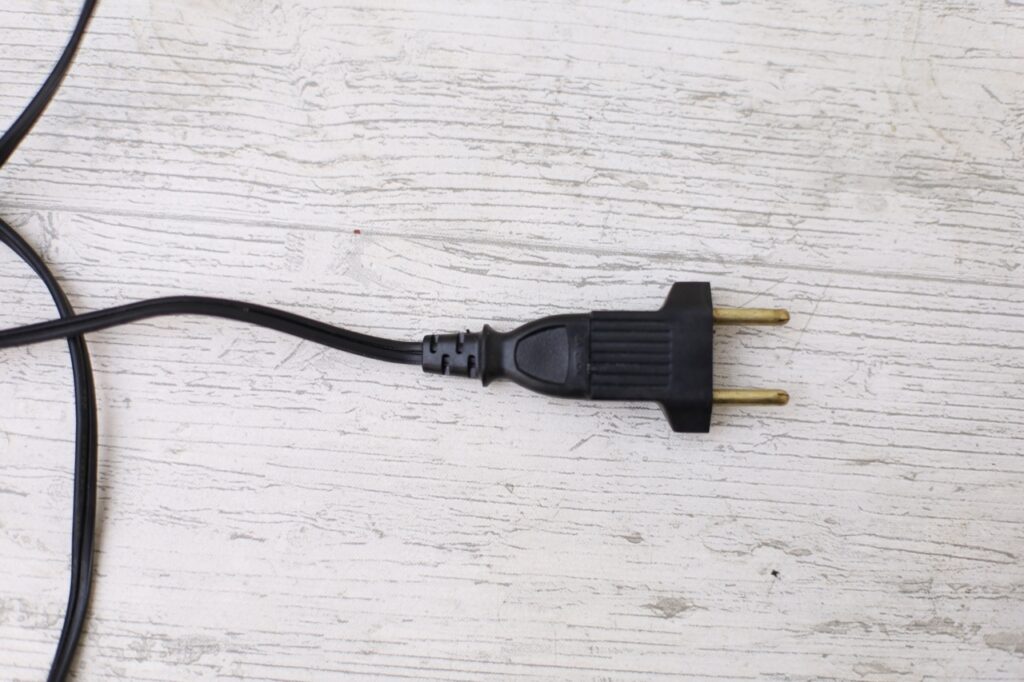
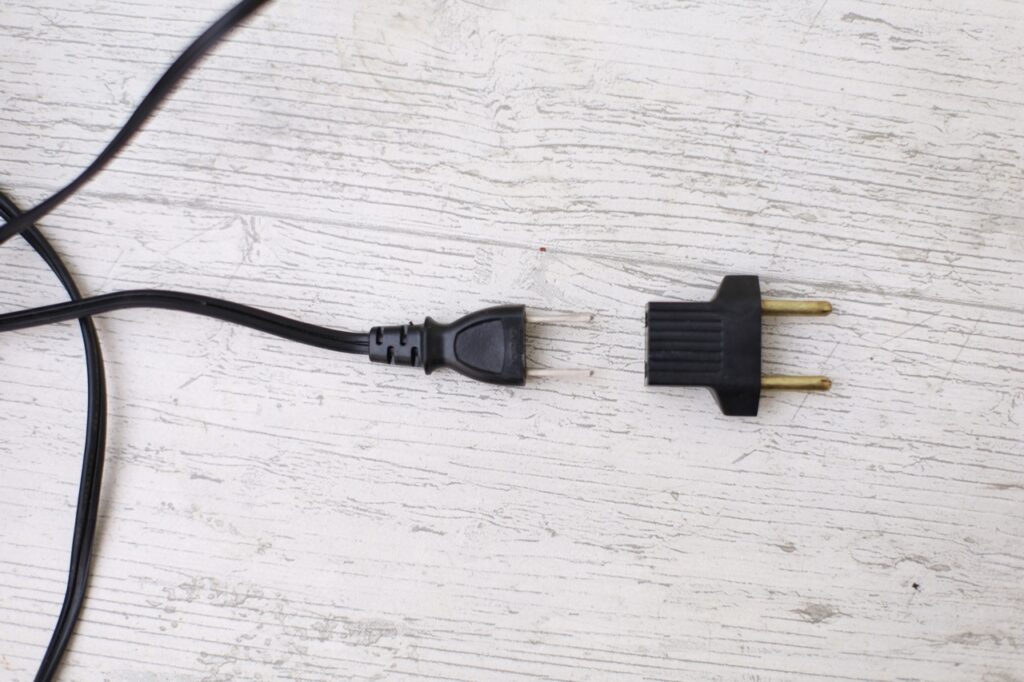
The interesting aspect is that this device seems to be an import (in Europe). The plug is the US / Japanese style, including the 3 sockets on the back panel. I found some online announcements where the same model was sold with the European plug and did not have the panel of 3 sockets on the back.


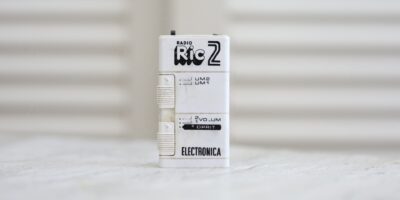

Zach
Thank you so much! I have a Technics SH-8057 with the same kind of push button and your method fixed my issue. (Displays would become dim due to poor contact inside the button)